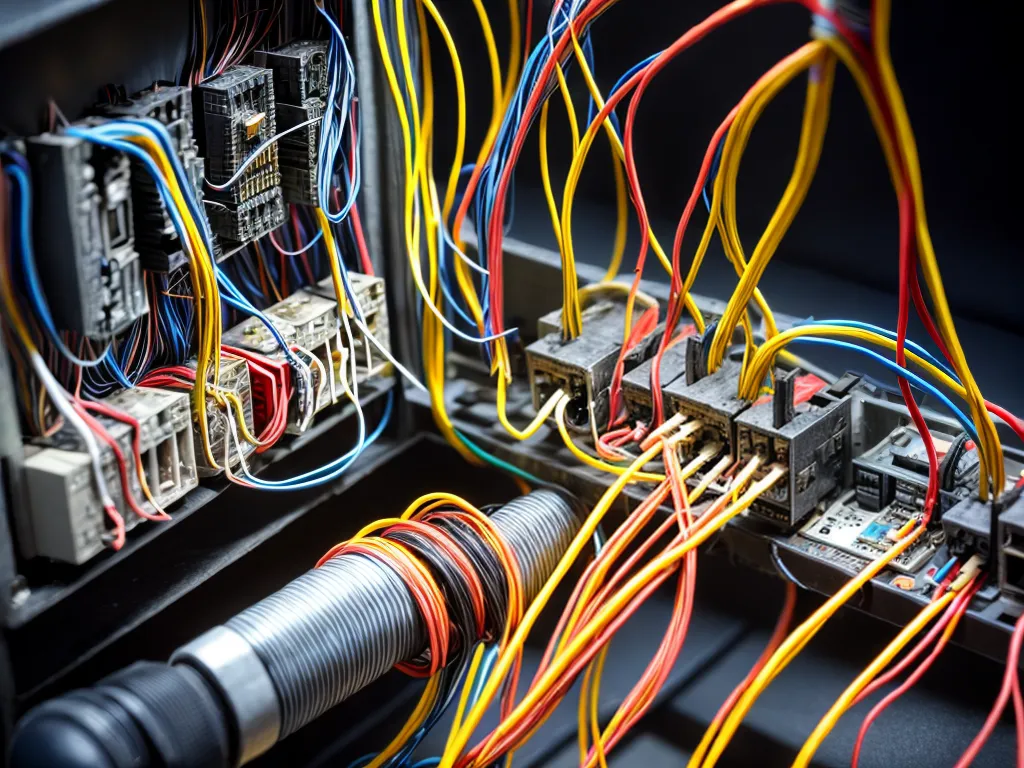
In certain niche cases, using obsolete or outdated wiring methods can actually be advantageous. As an electrician or hobbyist working with electrical systems, understanding when and how to properly implement these unorthodox techniques requires in-depth knowledge. With the right context and safety precautions, utilizing antiquated approaches can provide unique benefits.
Evaluating When Obsolete Wiring is Appropriate
Several key factors determine if obsolete wiring methods are suitable for a particular project:
Cost savings
Outdated materials and wiring can often be sourced very inexpensively. For example, acquiring old cloth-insulated wire or early-generation rubber-insulated cable salvaged from a building demolition may cost a fraction of modern wiring. If budget is a primary concern, the cost savings could justify using these older products.
Aesthetics
For certain artistic projects or historical restorations, maintaining period-appropriate electrical aesthetics is crucial. Using obsolete wiring helps preserve the authentic look and feel of an older electrical system. This is especially important for museum displays, historical sites, and antique infrastructure restorations.
Niche performance characteristics
Some obsolete wiring methods provide niche performance capabilities modern wiring lacks. For instance, antique lead-sheathed cable is more flexible and withstands vibration better than contemporary options. Very old braided copper wire offers unique electromagnetic properties. Certain applications demanding these specific traits may warrant using outdated wiring.
Educational purposes
Hands-on experience with antiquated wiring provides valuable educational insights into electrical history and fundamentals. Museums, schools, and historical societies may implement obsolete wiring methods solely as demonstrations to teach visitors and students.
Unavailability of modern wiring
In rare cases, new wiring may simply be impossible to acquire. For example, a restoration project in a remote area may not have access to contemporary electrical supplies. Using on-hand obsolete wiring could become necessary by default.
Adherence to regional regulations
Some local jurisdictions enforce outdated electrical codes prohibiting modern wiring. To legally perform electrical work in these areas, utilizing obsolete wiring may be mandatory. Common examples include historic districts and rural towns.
Key Safety Considerations
While utilizing obsolete wiring can provide advantages, it also comes with considerable safety risks. Take these critical precautions:
-
Carefully evaluate insulation condition - degraded insulation can cause short circuits and fires. Apply fresh insulation if needed.
-
Update overload protection - antique wiring may not handle modern electric loads without upgrades to fuses or breakers.
-
Add grounding - ungrounded obsolete wiring is unsafe by modern standards. Retrofit grounding when possible.
-
Ensure ample wire ratings - undersized antique wire overheats easily. Use the wire gauge needed for expected electric loads.
-
Separate from flammable materials - deterioration makes old insulation flammable. Keep wiring away from wood, textiles, etc.
-
Provide proper ventilation - overheating is common. Allow airflow to reduce fire risk.
Strictly adhering to modern electrical codes is also strongly advised whenever using obsolete wiring. While code exemptions sometimes apply, compliance ensures optimal safety.
Common Obsolete Wiring Methods
Many antiquated wiring techniques are poorly suited for contemporary applications. However, certain specific approaches remain viable for niche uses:
Knob and Tube Wiring
Knob and tube wiring involves running wire through ceramic knobs and tubes mounted on surfaces. It lacks grounding and has asbestos insulation concerns, but provides aesthetic appeal for period restorations.
Cloth-Insulated Wiring
Early cloth-insulated wiring has cotton or woven fabric shielding conductors. Prone to deterioration, it is mainly useful where cost savings outweigh risks, such as temporary wiring.
Braided Copper Wiring
Braided copper wire, with its bare copper conductor exposed to air, is highly obsolete and inefficient. However, it offers unique electromagnetic properties for specialized applications like antique radio repairs.
Lead-Sheathed Armored Cable
Lead-sheathed armored cable provides unparalleled vibration resistance and flexibility. This makes it suitable for niche industrial settings despite lead toxicity risks needing mitigation.
Rubber-Insulated Wiring
Early rubber-insulated wiring lacks modern performance, but can be readily salvaged from decommissioned buildings. In low-risk temporary wiring, its low cost outweighs shortcomings.
Key Takeaways
While obsolete wiring has severe limitations, certain niche applications warrant its selective use when appropriate precautions are taken. By carefully evaluating needs, aesthetics, costs, performance, and safety considerations, electrical projects can successfully leverage these antiquated techniques for beneficial results in specific use cases. With proper diligence and planning, the unique merits of these unorthodox wiring methods can be effectively harnessed.